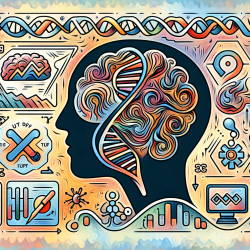Introduction
In the rapidly evolving field of speech-language pathology, data-driven decisions and innovative technologies are key to creating impactful outcomes for children. One such technological advancement is the use of AI cloud and edge sensors for recognizing emotional, affective, and physiological states. This blog delves into the findings from the research article "A Review of AI Cloud and Edge Sensors, Methods, and Applications for the Recognition of Emotional, Affective and Physiological States" and explores how practitioners can harness these insights to enhance their skills and therapy outcomes.
Understanding AI Cloud and Edge Sensors
AI cloud and edge sensors are designed to capture and analyze a range of human signals, including brain activity and biometric data, to recognize emotional, affective, and physiological states. These sensors can be deployed in various settings, providing real-time data that can be used to tailor therapeutic interventions. The research reviewed in the article highlights the effectiveness of these sensors in accurately detecting and interpreting human emotions, which is crucial for speech-language pathologists working with children.
Key Findings from the Research
The research article provides a comprehensive review of AI cloud and edge sensors, consolidating findings from multiple studies. Key takeaways include:
- AI cloud and edge sensors can effectively capture and analyze a wide range of human signals.
- These sensors are particularly useful in recognizing emotional and physiological states, which can be critical in therapeutic settings.
- The integration of contextual data, such as demographic and cultural background, enhances the accuracy of emotion recognition.
- Advanced AI algorithms, including machine learning and neural networks, play a significant role in processing and interpreting the data collected by these sensors.
Applications in Speech-Language Pathology
For practitioners in speech-language pathology, the application of AI cloud and edge sensors can revolutionize the way therapy is delivered. Here are some practical ways to implement these technologies:
- Real-Time Emotion Monitoring: Use AI sensors to monitor children's emotional states during therapy sessions, allowing for immediate adjustments to interventions based on the child's emotional response.
- Personalized Therapy Plans: Leverage the data collected by AI sensors to create personalized therapy plans that address the unique emotional and physiological needs of each child.
- Enhanced Engagement: Incorporate AI-driven insights to develop engaging and emotionally supportive therapy activities that keep children motivated and responsive.
- Data-Driven Outcomes: Utilize the detailed data provided by AI sensors to track progress and outcomes, ensuring that therapy is effective and goals are being met.
Encouraging Further Research
While the current research provides valuable insights, there is always room for further exploration. Practitioners are encouraged to engage in ongoing research and collaboration to continue advancing the field. Some areas for future research include:
- Exploring the integration of AI sensors with other therapeutic tools and technologies.
- Investigating the long-term impact of AI-driven interventions on children's emotional and communicative development.
- Developing standardized protocols for the use of AI sensors in speech-language pathology.
Conclusion
AI cloud and edge sensors offer a promising avenue for enhancing emotional recognition and therapy outcomes in speech-language pathology. By leveraging these advanced technologies, practitioners can create more personalized, effective, and engaging therapy experiences for children. As the field continues to evolve, ongoing research and innovation will be key to unlocking the full potential of AI in therapeutic settings.
To read the original research paper, please follow this link: A Review of AI Cloud and Edge Sensors, Methods, and Applications for the Recognition of Emotional, Affective and Physiological States.










